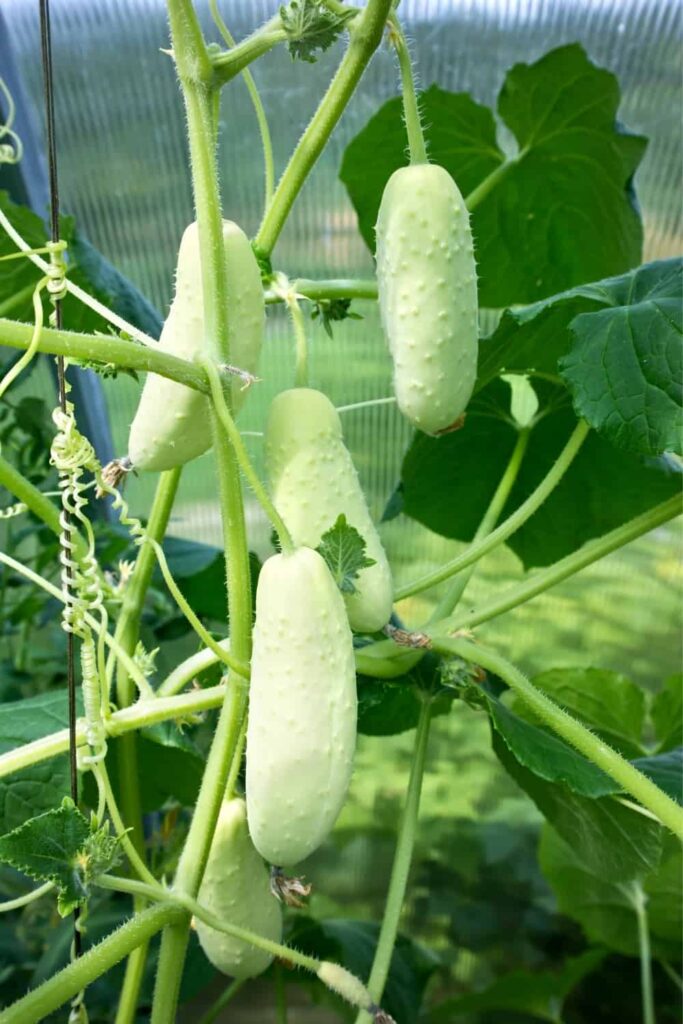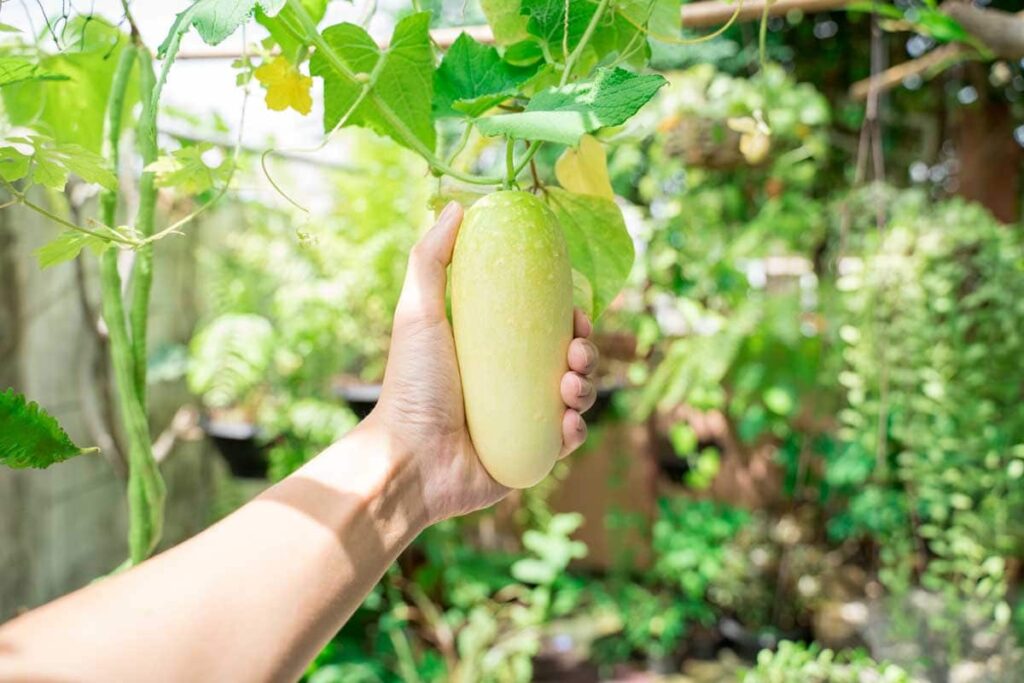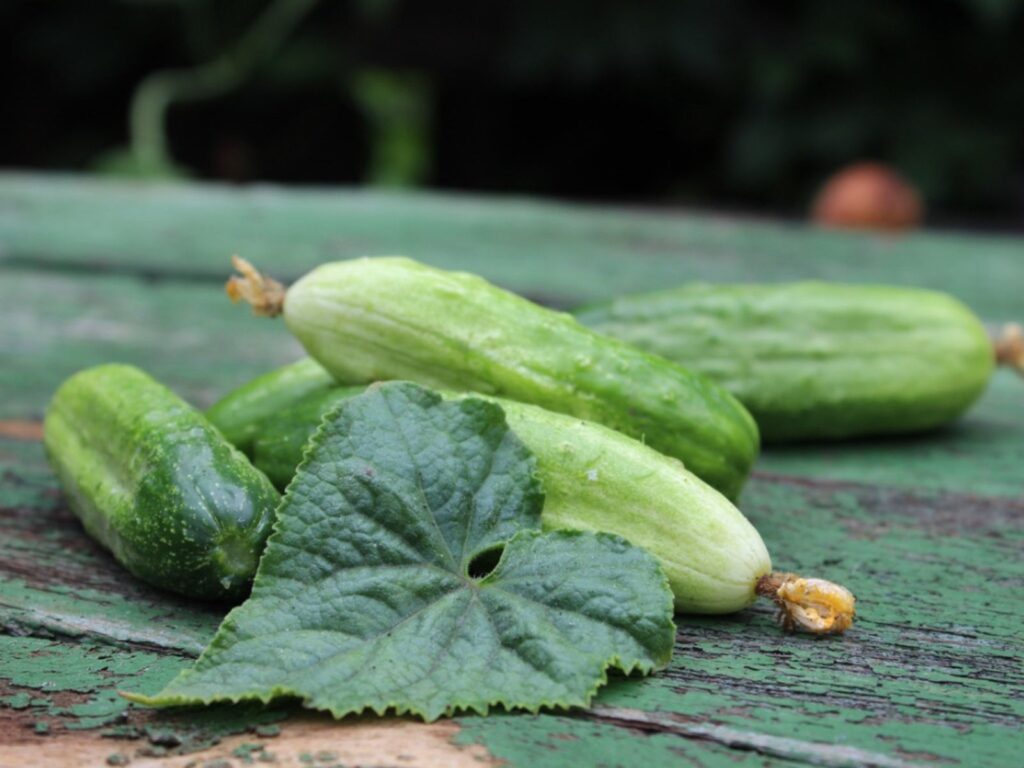So you planted some cucumbers in your garden, eagerly awaiting the day you can pick fresh, vibrant green cucumbers from the vine. But wait – what’s this? You notice that some of your cucumbers are turning white. What could be causing this strange phenomenon? In this article, we will explore the possible reasons why your cucumbers are losing their green color and turning white, so you can take the necessary steps to ensure a bountiful harvest of perfectly ripe cucumbers.
Why Are My Cucumbers Turning White?
If you’re a cucumber enthusiast and have noticed some discoloration on your plants, specifically a white hue, you may be wondering what’s causing this peculiar phenomenon. There are several potential reasons for cucumbers turning white, ranging from insufficient pollination to nutrient deficiencies. In this article, we will explore each possible cause in detail, discussing symptoms, causes, prevention, and treatment methods to help you understand and address this issue effectively.

Insufficient Pollination
Insufficient pollination is one possible reason behind your cucumbers turning white. Pollination is crucial for the development of healthy cucumber fruits. When cucumbers don’t receive sufficient pollen, their growth can be stunted, resulting in white and small-sized fruits.
Lack of Pollinators
The absence of pollinators, such as bees and other insects, can be a common cause of insufficient pollination. These creatures play a vital role in transferring pollen from the male to the female cucumber flowers, initiating the fruiting process.
Poor Weather Conditions
Unfavorable weather conditions, such as excessive rainfall, strong winds, or extended periods of cold and wet weather, can impede pollinators’ activity and prevent proper pollination from occurring. If the flowers aren’t getting pollinated, the cucumbers may turn white.
Self-Pollination Issues
Certain cucumber varieties are capable of self-pollination, meaning they can produce fruits without external pollen transfer. However, if these self-pollination mechanisms fail to function correctly, the cucumbers may not develop properly, resulting in a white appearance.
Powdery Mildew
Another potential culprit behind white cucumbers is powdery mildew. Powdery mildew is a common fungal disease that affects many plants, including cucumbers. It manifests as a white, powdery coating on the leaves, stems, and fruits, hindering their normal growth and development.
Symptoms
The first signs of powdery mildew on cucumbers are the appearance of white, powdery patches on the leaves and other affected parts. As the disease progresses, these patches can spread, leading to stunted growth, distorted leaves, and, ultimately, white-colored fruits.
Causes
Powdery mildew thrives in warm, humid conditions, making it more prevalent during summer months. Overcrowded plants, excessive nitrogen levels, and poor air circulation can create favorable conditions for its development. If left untreated, powdery mildew can cause serious damage to your cucumber plants.
Prevention and Treatment
To prevent powdery mildew, it is crucial to ensure proper spacing between plants, allowing for adequate airflow. Regularly inspect your cucumber plants for early signs of the disease, and if detected, promptly employ organic fungicides or homemade remedies like neem oil or a baking soda solution. Additionally, removing and disposing of infected plant material can help halt the spread of the disease.

Sunscald
Sunscald is another potential reason for white cucumbers. Sunscald occurs when cucumbers are exposed to excessive sunlight, particularly during hot summer days. This prolonged exposure to intense sunlight can cause the cucumber’s skin to become discolored, resulting in white or pale patches.
Definition and Causes
Sunscald happens when cucumber fruits are unprotected or lack the shade provided by leaves or other plant structures. This leads to the skin becoming sunburnt and damaged, resulting in a white appearance.
Prevention and Treatment
To prevent sunscald, consider using trellises or other supportive structures to provide shade and protect the cucumbers from direct sunlight. Additionally, applying a layer of mulch around the base of the plants can help regulate soil temperature and reduce the risk of sunscald. If you notice signs of sunscald, it is best to harvest the affected cucumbers promptly rather than leaving them on the vine.
Nutrient Deficiency
Inadequate nutrition can also contribute to the development of white cucumbers. Cucumbers require a balanced supply of essential nutrients to thrive and produce healthy fruits. When certain nutrients are lacking, it can cause the cucumber fruits to turn white.
Common Nutrient Deficiencies
Two common nutrient deficiencies that can lead to white cucumbers are nitrogen and calcium deficiencies. Nitrogen is vital for overall plant growth, while calcium contributes to the development of strong cell walls and prevents disorders like blossom end rot.
Symptoms
Nitrogen deficiency in cucumber plants can lead to pale leaves, stunted growth, and poor fruit development. On the other hand, calcium deficiency may cause blossom end rot, a disorder characterized by white, water-soaked patches at the blossom end of the fruits.
Remedies and Prevention
To address nutrient deficiencies, it is essential to provide your cucumber plants with a well-balanced fertilizer that includes the necessary nutrients. Regular soil testing can help determine any deficiencies and guide your fertilizer application. Additionally, incorporating organic matter into the soil can improve nutrient availability and ensure your plants receive adequate nutrition.

Phytophthora Blight
Phytophthora blight is a fungal disease caused by the pathogen Phytophthora capsici. This disease affects various vegetables, including cucumbers, leading to white-colored fruits and other visible symptoms.
Symptoms
Infected cucumber fruits may display a white, water-soaked appearance, which can progress to a brown or black rot. Other symptoms include wilting, leaf lesions, and damping-off of young plants.
Causes
Phytophthora blight thrives in warm, wet conditions, making it prevalent during periods of high rainfall or excessive irrigation. The pathogen can be introduced to your garden through infected plants or contaminated soil.
Prevention and Management
To prevent Phytophthora blight, ensure proper spacing between plants and provide adequate drainage to prevent waterlogging. Avoid overhead irrigation and practice crop rotation to reduce the disease’s spread. Fungicidal sprays and treatments can also be effective in managing the disease when used according to label instructions.
Powdery Mildew Fungus
Cucumbers can also be affected by a specific powdery mildew fungus known as Podosphaera xanthii, which can cause white discoloration on the fruits.
Symptoms
Similar to other powdery mildew infections, the symptoms include the appearance of white, powdery patches on the fruits. As the disease progresses, these patches can grow and cover a larger surface area.
Causes
The powdery mildew fungus thrives in warm, dry conditions. Overcrowded plants, inadequate spacing, and poor air circulation can create an ideal environment for its growth.
Control Measures
Controlling powdery mildew fungus requires maintaining proper air circulation around the plants. Regularly prune and remove affected plant parts, and consider applying organic fungicides to limit the spread of the fungus. Additionally, ensuring appropriate plant spacing and avoiding excess nitrogen fertilization can help prevent infections.

Fungal Infection
Various fungal infections can affect cucumber plants, leading to white discoloration on the fruits.
Symptoms
Fungal infections can cause white or grayish patches on the cucumber fruits. These patches may be accompanied by other visible symptoms, such as softening of the affected areas or the presence of mold.
Causes
Fungal infections can be caused by several fungal pathogens that thrive in moist environments. Over-watering, high humidity, and poor air circulation can create conditions suitable for fungal growth.
Management and Prevention
Fungal infections can be managed by practicing good sanitation in your garden. Regularly remove and dispose of infected plant material to prevent the spread of fungal spores. Additionally, improving air circulation and properly watering the plants can reduce the risk of fungal infections.
Water Stress
Water stress can significantly impact the health and development of cucumbers, potentially leading to white discoloration on the fruits.
Causes of Water Stress
Water stress can be caused by both underwatering and overwatering. Insufficient watering deprives the plants of much-needed moisture, while excessive watering can result in waterlogged soil, hampering root function.
Effects on Cucumbers
When cucumbers experience water stress, their growth can be stunted, and their fruits may turn white. Water stress can affect the overall vigor of the plants and compromise their ability to produce healthy fruits.
Prevention and Solutions
To prevent water stress, ensure that your cucumber plants receive consistent and appropriate watering. Regularly monitor soil moisture levels and adjust your watering schedule accordingly. Properly preparing the soil with organic matter can also help improve moisture retention and drainage.

Cucumber Mosaic Virus
The cucumber mosaic virus is a common viral infection that can affect cucumbers, resulting in various symptoms, including white discoloration of the fruits.
Symptoms
Cucumber mosaic virus can cause mosaic patterns of light and dark green on the leaves, stunted growth, and distorted fruits. The affected cucumbers may exhibit white or pale spots on the skin.
Causes
The cucumber mosaic virus is primarily spread through aphids, which act as vectors for the virus. Infected plant debris and contaminated tools can also facilitate its spread.
Control and Prevention
To control the spread of the cucumber mosaic virus, it is crucial to regularly inspect your plants for aphid infestations and promptly remove any affected plants. Implementing physical barriers, such as insect netting, can help prevent aphid transmission. Additionally, practicing good sanitation and removing infected plant material can reduce the risk of virus spread.
In conclusion, there are numerous factors that can contribute to cucumbers turning white. Insufficient pollination, powdery mildew, sunscald, nutrient deficiencies, phytophthora blight, powdery mildew fungus, fungal infections, water stress, and cucumber mosaic virus can all play a role in causing this discoloration. By understanding the symptoms, causes, and prevention measures associated with each factor, you can effectively address the issue and ensure healthy cucumber growth and development.



